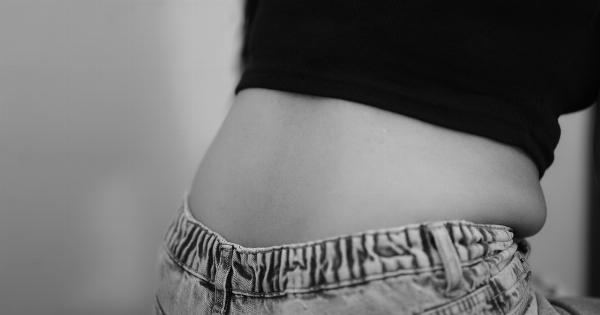Urinary incontinence can be a distressing condition that affects many women. Simply put, it is the unintentional loss of urine that occurs due to a variety of reasons.
Incontinence can range from mild occasional leaks to severe leaks, which can significantly impact a woman’s daily life. However, it is a treatable condition, and finding the cause of incontinence is crucial in finding a solution.
Types of Urinary Incontinence
Before we dive into causes and solutions, it is essential to understand the different types of incontinence:.
Stress Incontinence
This type of incontinence occurs when there is pressure or stress on the bladder caused by physical activity or coughing. It most commonly happens during exercise, but it can also arise after sneezing, laughing, or even lifting a heavy object.
Urge Incontinence
Urge incontinence occurs when there is a sudden and intense urge to urinate, and the bladder contracts involuntarily, making it impossible to hold the urine.
This type of incontinence is common, and it can be caused by nerve damage, bladder inflammation or infection, or a weak pelvic floor.
Overflow Incontinence
This type of incontinence happens when the bladder does not empty fully, causing constant or frequent dribbling of urine. It’s usually caused by an obstruction, such as an enlarged prostate in males or pelvic organ prolapse in females.
Causes of Urinary Incontinence in Females
Urinary incontinence can arise due to several reasons, and identifying the underlying cause is essential to determine appropriate treatment. Here are some of the most common causes of urinary incontinence in females:.
Pregnancy and Childbirth
Pregnancy and childbirth can significantly affect a woman’s pelvic floor muscles. During pregnancy, the growing uterus can put pressure on the bladder and urethra, leading to incontinence.
In childbirth, the pelvic floor muscles can be stretched or damaged, leading to incontinence.
Menopause
As women age, the levels of estrogen hormone in the body decrease. This hormone is responsible for maintaining the health of the urinary tract and pelvic floor muscles. The decreased levels can weaken the bladder and result in incontinence.
Obesity
Obesity can make a woman more prone to incontinence because the extra weight puts pressure on the bladder and weakens the pelvic floor muscles.
Medical Conditions
Various medical conditions can lead to urinary incontinence, such as urinary tract infections, neurological disorders, diabetes, and certain medications.
Treatments for Urinary Incontinence in Females
The treatment of urinary incontinence varies depending on the type and cause of incontinence. Here are some common treatment options:.
Behavioral Therapy
A behavioral approach can help treat incontinence by making lifestyle changes, such as reducing fluid intake, losing weight, and doing pelvic floor exercises. Placebo medications can be used as a part of behavioral therapies in some cases.
Medications
Various medications can help control symptoms of incontinence. These include antimuscarinic drugs that relax the bladder and decrease urgency while decreasing urine production and alpha-agonists, which can help prevent leaks in stress incontinence.
Hormone replacement theraphy can also be an option for some women.
Surgery
Surgery might be necessary in severe cases that don’t respond to other treatments. Surgery can help improve the strength of the pelvic floor muscles and offer more support to the bladder.
It might also involve bladder slings, midurethral slings, or bladder-neck suspensions; These operations are usually performed under general anesthetic.
Conclusion
Urinary incontinence is a treatable condition, and most women can get relief from their symptoms with proper diagnosis and treatment.
If you are experiencing urinary incontinence, do not hesitate to seek help from your healthcare provider to identify the underlying cause and find the best treatment options for you.





























